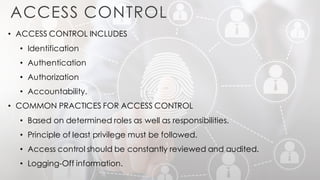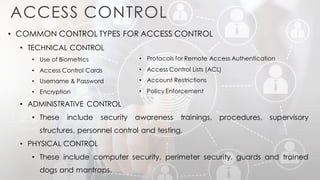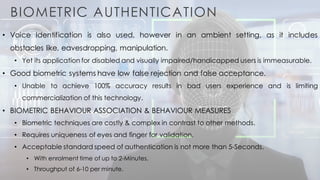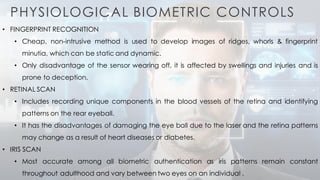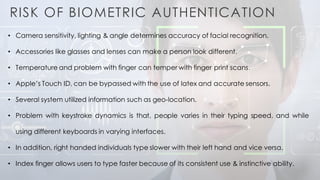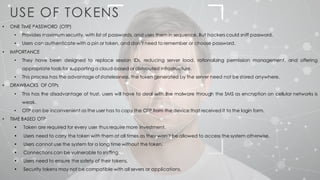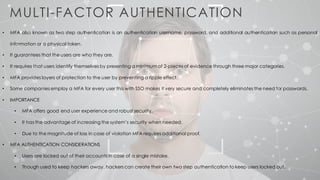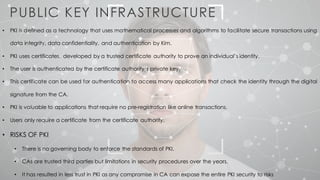This document provides an overview of various authentication methods and access control techniques. It discusses biometric authentication using fingerprints, iris scans, and other physiological traits. It also covers risks of biometric authentication like environmental factors impacting accuracy. Additional topics summarized include use of tokens, multi-factor authentication, single sign-on, and public key infrastructure for identity verification.


